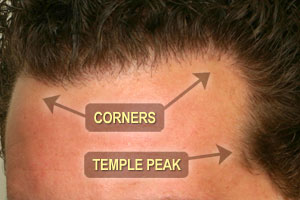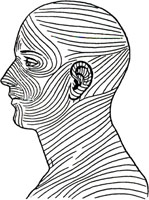i had a hair transplant done just a short while ago. I traveled a long way to have this doctor do it due to his high reputation as one of the best. My initial consultation with him was not even 3 minutes & he did no use any device that shows hair density. i had already been committed due to his requirement of a non refundable deposit in advance.
On the day of surgery he spent not even 15 minutes to do incision of 2400 FU Grafts. The only other time he came back was late in the afternoon to give me another 400 FU grafts incision. what really concerns me is that how he could not even once come back to check what is being done or how things are going the entire day. In the initial consultation he also told that i have extremely thin hair but i ended up getting more than 2800 FU Grafts, a lot more than what i was supposed to get. Is there anything to be concerned about here other than obviously so little caring or is this typical for any doctor to only do incisions & let his assistants do all the rest w/o any checking at all?
i wish i would have known about you before choosing this doctor & all i would have traveled would have been less than a very short distance. i was also told that i can do another 2000 grafts next year but i doubt if i will go back to someone who ended up spending not even a total of 25 minutes altogether for everything from consultation & doing a total of 2800 grafts.
Another concern even though i want to believe that i really got the number of grafts that i was told, but is there any way to determine or guess by an expert like you having trained eyes that i really got the number of FU or anything close to that? It will be just for my own curiosity & not anything else.
Thanks in advance for your reply.

 I feel bad for your experience. I try to advocate for the readers and patients, but ultimately the burden is upon you to choose the doctor you feel comfortable with. It might be a little late, but read this post on Selecting a Hair Transplant Doctor.
I feel bad for your experience. I try to advocate for the readers and patients, but ultimately the burden is upon you to choose the doctor you feel comfortable with. It might be a little late, but read this post on Selecting a Hair Transplant Doctor.
During the procedure technicians place the grafts, but the doctor should have been in the operating room to make the recipient sites and remove the strip from the donor area (if that is the technique used). If he did not do this, then he broke the law. There are some doctors who routinely break the law with regard to allowing a non-physician to create recipient sites, but it sounds like he was at least there for creating the sites.
At this point, all you can hope for is good results. It is very unfortunate that you don’t trust your doctor enough to believe you got the number of grafts you paid for, but we have offered and performed many second opinions for patients that need counts done. What I mean is, I have consulted with patients such as yourself and attempted to count every single graft placed, but that would likely be too drastic at this point.
At the least, you can start out by asking the clinic for your complete operation sheet, which should have all the hair and graft counts written down. Be aware that not all doctors or medical groups may have this or provide it for you, but also know it is also your right to obtain your medical records (by law). Good luck.


 In general, thinning hair in the front and crown sounds like male pattern baldness. I am confused by your description of the temples and wonder if the area you’re referencing is actually the corners of the frontal hairline, which is commonly confused terminology. See the photo at right for clarification.
In general, thinning hair in the front and crown sounds like male pattern baldness. I am confused by your description of the temples and wonder if the area you’re referencing is actually the corners of the frontal hairline, which is commonly confused terminology. See the photo at right for clarification. Hair transplantation works well for scars. I would imagine that a transplant would be in the $3000 range. We would, of course, need to evaluate you first and then a quote can be offered.
Hair transplantation works well for scars. I would imagine that a transplant would be in the $3000 range. We would, of course, need to evaluate you first and then a quote can be offered. I feel bad for your experience. I try to advocate for the readers and patients, but ultimately the burden is upon you to choose the doctor you feel comfortable with. It might be a little late, but read this post on
I feel bad for your experience. I try to advocate for the readers and patients, but ultimately the burden is upon you to choose the doctor you feel comfortable with. It might be a little late, but read this post on  Hair spray, dandruff, or sebum do not cause hair loss. Genetic inheritance causes hair loss in men for the majority of cases.
Hair spray, dandruff, or sebum do not cause hair loss. Genetic inheritance causes hair loss in men for the majority of cases.  The direction that hair grows after a transplant is determined by the transplant surgeon. Some doctors place the hair straight upward reaching for the sky like you reported, while others place them in a radial direction so that the hair looks like the spokes of a bicycle wheel. Some hair restoration procedures (like those of flaps), have hair that grows 90 degrees off pointing to the side. In all of these situations, the transplants or flaps permanently point the direction of the hair.
The direction that hair grows after a transplant is determined by the transplant surgeon. Some doctors place the hair straight upward reaching for the sky like you reported, while others place them in a radial direction so that the hair looks like the spokes of a bicycle wheel. Some hair restoration procedures (like those of flaps), have hair that grows 90 degrees off pointing to the side. In all of these situations, the transplants or flaps permanently point the direction of the hair.